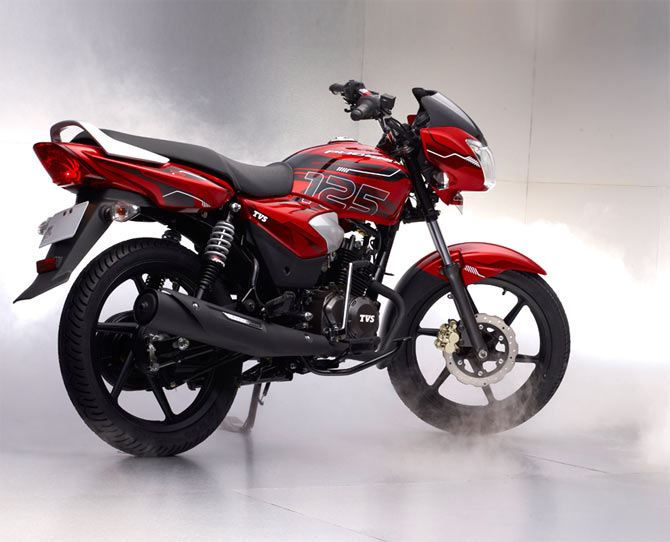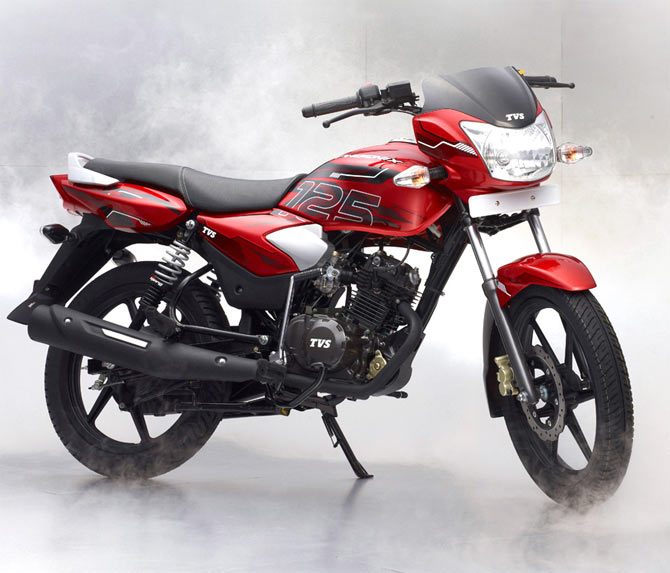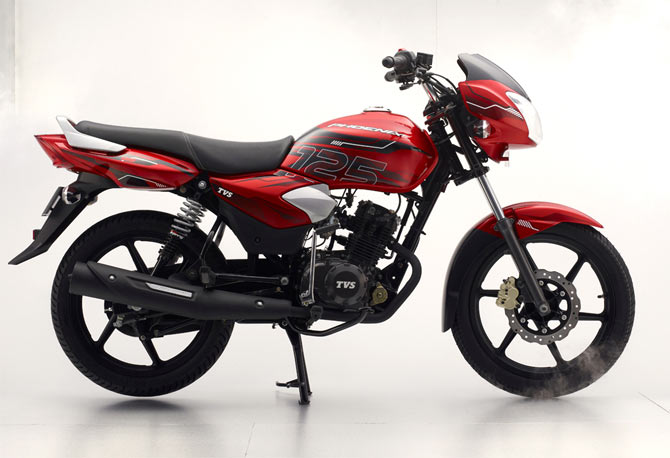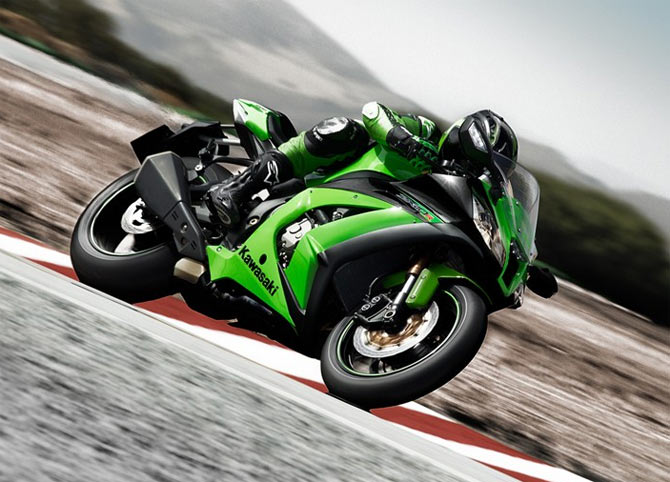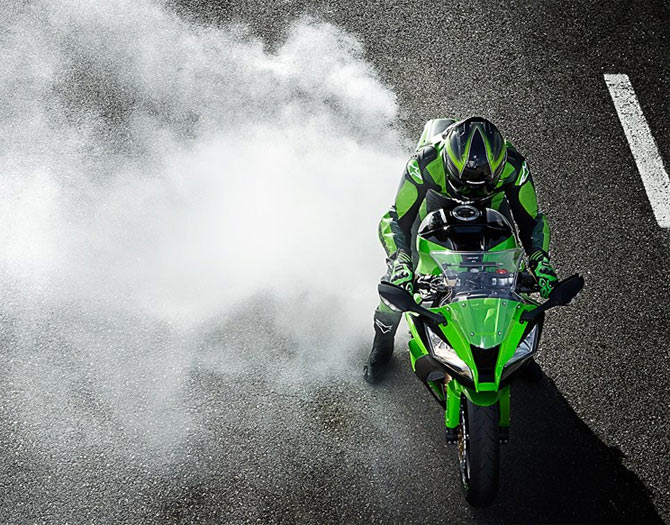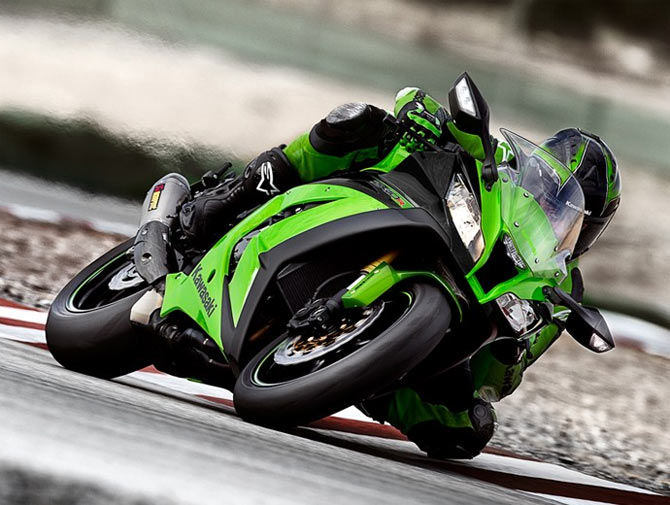 | « Back to article | Print this article |
How are disc brakes different from drum brakes
Both brakes have their respective strengths and weaknesses. An objective look at both of them.
Any die-hard biker would never like the bike to stop once it's tires have hugged the road but anyone who rides in the city knows exactly how many times brakes have to be applied and tightening the brakes becomes a frequent activity.
Every part of the bike has an important role to play but your safety and that of your precious two-wheeler is largely dependent on the brakes and the condition that they are in.
The brakes are what allow you to halt your bike when you wish to. Just as engines have evolved over the years so has brake technology. Many older bikes have drum brakes. But most new bikes will have a disc brake fitted to the front wheel.
So how are disc brakes different from drum brakes?
Are disc brakes required on both wheels?
The front brake of the bike provides close to 70 per cent of the stopping power and a disc brake is more suitable for it. On the other hand the rear wheel of a bike provides only 30 per cent of breaking power and using a disc brake for it wouldn't really add too much to its performance.
Most bike manufacturers will install disc brakes on the front wheel and drum brakes on the back one.
If you find this information useful please share it with your motor-biking friends. If you have additional information on drum brakes and disc brakes please share it on the message board below.
How are disc brakes different from drum brakes
How is the disc brake different from a drum brake?
An initial description might make it seem like the disc brake is far superior to a drum brake. However, both these types of brakes have their respective strengths and weaknesses. Let's take an objective look at both of them:
The fade factor
This is one of the biggest differences between a disc brake and a drum brake. When a brake is applied the resultant friction causes the entire braking mechanism to heat-up.
In the case of a drum brake the heat expands the drum. Excessive heat leads to a reduction in the friction between the brake shoe and the lining which in effect means less braking power.
Since a disc brake relies on a combination of callipers and discs, fade does not affect it as much as it does a drum brake and you automatically get more braking power.
If you find this information useful please share it with your motor-biking friends. If you have additional information on drum brakes and disc brakes please share it on the message board below.
How are disc brakes different from drum brakes
The water effect
When a drum brake becomes wet the way it does in the monsoons, the heat that is caused by the friction between the brake shoe and the lining reduces thus leading to less braking power.
Disc brakes on the other hand remain unaffected by water. What this simply means is that if you are going to be riding through water or in the rains, having a bike with a front-wheel disc brake is a wise choice.
If you find this information useful please share it with your motor-biking friends. If you have additional information on drum brakes and disc brakes please share it on the message board below.
How are disc brakes different from drum brakes
The maintenance quotient
Drum brakes have a lot of parts, thus require a lot of adjustments. More parts also mean more maintenance. The simplicity of the disc brake design makes it very easy to maintain.
If you find this information useful please share it with your motor-biking friends. If you have additional information on drum brakes and disc brakes please share it on the message board below.
How are disc brakes different from drum brakes
When dust matters
Drum brakes are after all inside a drum and they tend to collect more dirt and grime which actually has nowhere to go. On the contrary, a disc brake tends to dissipate heat better, thus lesser dust collects on it.
If you find this information useful please share it with your motor-biking friends. If you have additional information on drum brakes and disc brakes please share it on the message board below.
How are disc brakes different from drum brakes
Metal is not always good
Though many wheels will have rubber pads some bike manufacturers will use metal-based pads. This makes the disc brake rotors on the front wheel warp more often and will squeal more as well. This can be avoided by outfitting the back of the pads with anti-squeal shims.
This is not the case with a drum brake though it does its fair share of squealing too. It also tends to warm up faster in extremely cold weather.
If you find this information useful please share it with your motor-biking friends. If you have additional information on drum brakes and disc brakes please share it on the message board below.
How are disc brakes different from drum brakes
The stony issue
A drum brake is covered and gravel and small stones don't really get lodged into it very easily. Loose gravel can get wedged in-between the rotor and the callipers of a disc brake and cause damage.
If you find this information useful please share it with your motor-biking friends. If you have additional information on drum brakes and disc brakes please share it on the message board below.
How are disc brakes different from drum brakes
The costing
The drum brake is less expensive than a disc brake as it is unassisted. A disc brake operates on a hydraulic system which is an expensive affair. Another reason why the latter tends to be more expensive is that special alloys are used in its production and the spares are more expensive.
At the end of the day, both drum brakes and disc brakes have their pros and cons. Most new bikes will come outfitted with front disc brakes and rear drum brakes.
Another very important factor to keep in mind is that you must never let the machine overpower you. Speed can kill irrespective of which brakes you have on your bike.
The brake always has to be on your impulse. Behave in a restrained manner, maintain your bike brakes well and ride safe.
If you find this information useful please share it with your motor-biking friends. If you have additional information on drum brakes and disc brakes please share it on the message board below.


